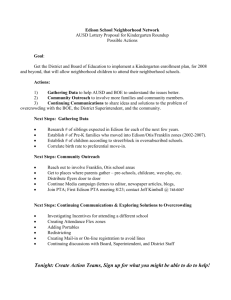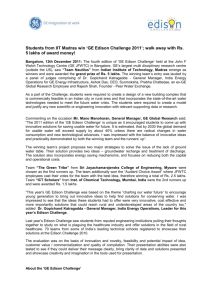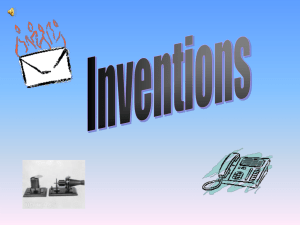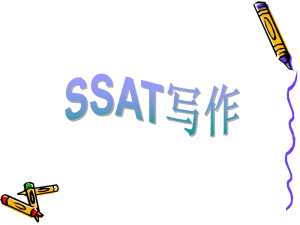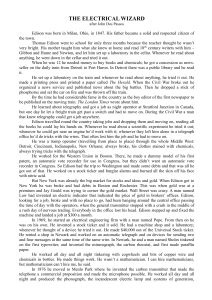Thomas Edison
advertisement
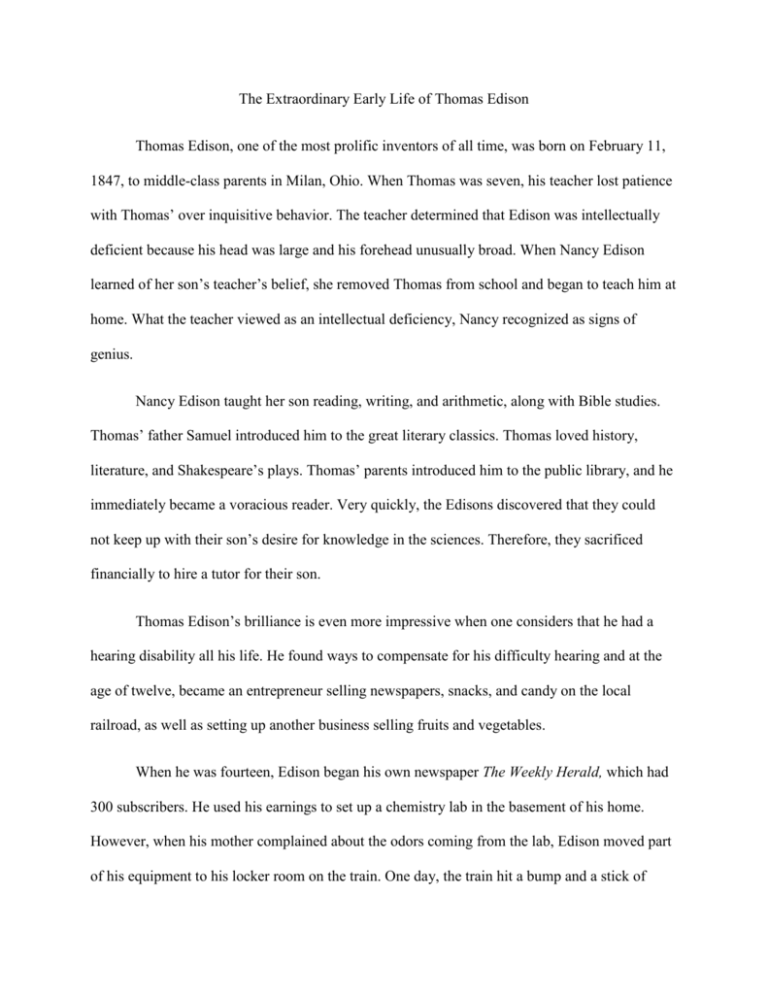
The Extraordinary Early Life of Thomas Edison Thomas Edison, one of the most prolific inventors of all time, was born on February 11, 1847, to middle-class parents in Milan, Ohio. When Thomas was seven, his teacher lost patience with Thomas’ over inquisitive behavior. The teacher determined that Edison was intellectually deficient because his head was large and his forehead unusually broad. When Nancy Edison learned of her son’s teacher’s belief, she removed Thomas from school and began to teach him at home. What the teacher viewed as an intellectual deficiency, Nancy recognized as signs of genius. Nancy Edison taught her son reading, writing, and arithmetic, along with Bible studies. Thomas’ father Samuel introduced him to the great literary classics. Thomas loved history, literature, and Shakespeare’s plays. Thomas’ parents introduced him to the public library, and he immediately became a voracious reader. Very quickly, the Edisons discovered that they could not keep up with their son’s desire for knowledge in the sciences. Therefore, they sacrificed financially to hire a tutor for their son. Thomas Edison’s brilliance is even more impressive when one considers that he had a hearing disability all his life. He found ways to compensate for his difficulty hearing and at the age of twelve, became an entrepreneur selling newspapers, snacks, and candy on the local railroad, as well as setting up another business selling fruits and vegetables. When he was fourteen, Edison began his own newspaper The Weekly Herald, which had 300 subscribers. He used his earnings to set up a chemistry lab in the basement of his home. However, when his mother complained about the odors coming from the lab, Edison moved part of his equipment to his locker room on the train. One day, the train hit a bump and a stick of phosphorous ignited. The baggage car caught fire, and the conductor hit Edison on the side of his head. This may have exacerbated his hearing loss. Conversely, Thomas saved the station master’s young son when the child wandered onto the tracks in front of an oncoming train. As a reward, the station master taught Edison the Morse code and how to operate a telegraph. This enabled Edison to obtain a job when he was fifteen as a telegraph operator. During the Civil War, many men in that position had left their jobs to join the military, so this was a perfect opportunity for young Edison. Once the war ended, however, Edison left home to seek his fortune. While traveling throughout the Midwest, Edison became well-known as a telegraph operator and even invented a device to transmit signals between unstaffed telegraph stations. Eventually, Thomas moved to Boston to take a position with Western Union. During this time, he received his first patent for an electric voting machine. Unfortunately, his invention was rejected by the Massachusetts Legislature. Edison then traveled to New York City, where he earned $40,000 for rights to a stock ticker he invented. As he accumulated more money for his inventions, Edison used his earnings to set up a lab in Newark, NJ, which he later moved to Menlo Park. Here he invented the first phonograph and first practical light bulb. Source: Gerald Beals, “The Biography of Thomas Edison.: 1999. http://www.thomasedison.com/biography.html.
